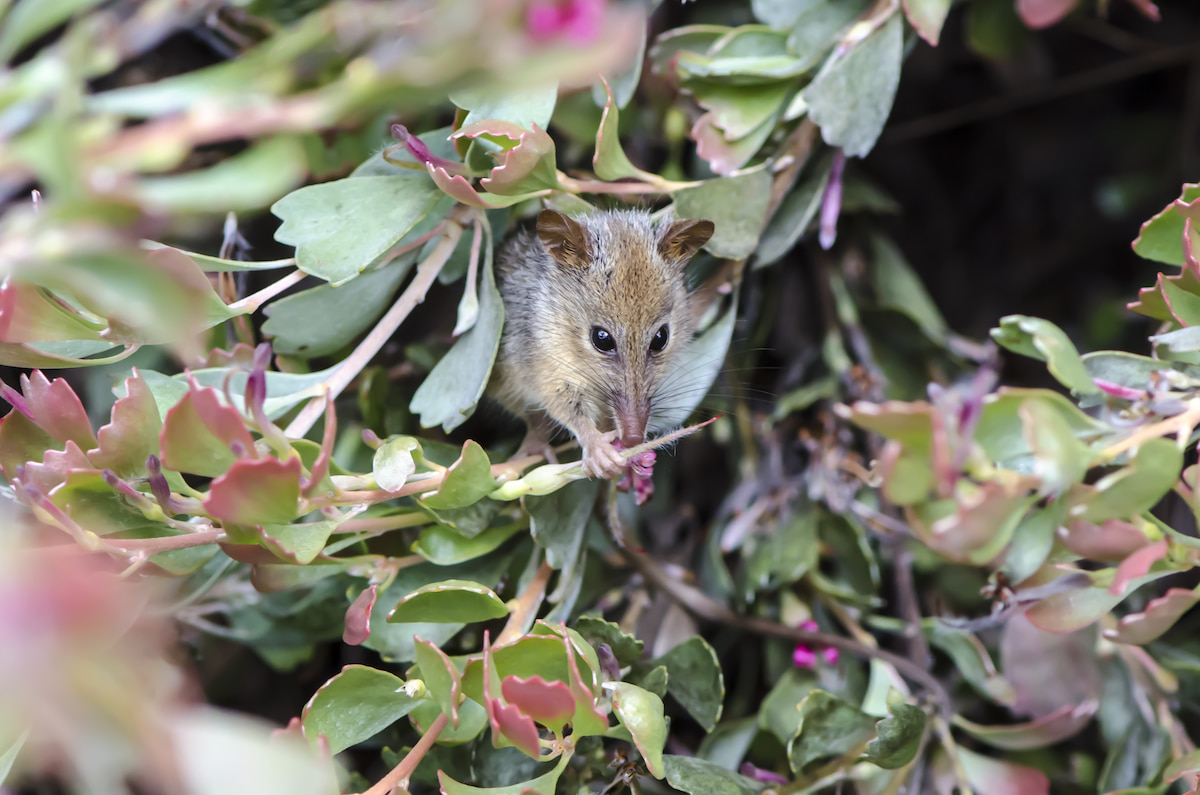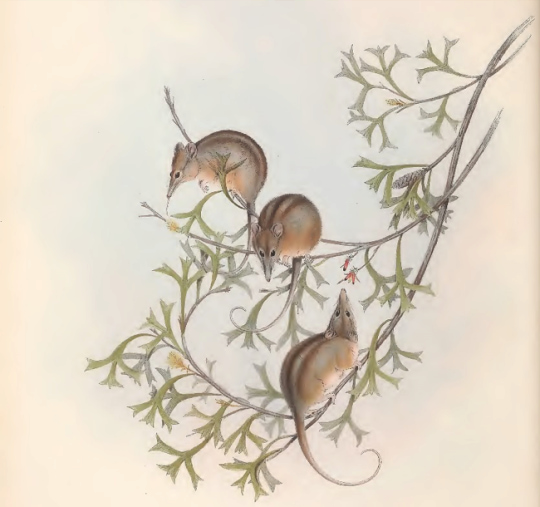Honey Possum
Specialised dietary requirements
Known to Noongar people as the noolbenger, this tiny little marsupial – just the size of a mouse – is a vitally important species in south-western Australia.
Despite the name, the honey possum is only distantly related to possums, and it doesn’t actually eat honey.
It does feed exclusively on nectar and pollen from flowers – the only marsupial in the world to have such a specialised diet. The honey possum eats virtually its own body weight in nectar every day – equivalent to a human drinking 50 litres of soft drink per day! (Bush Heritage Australia)
Image: Illustration from The Mammals of Australia, Gould, 1863

Image: Nicole Hodgson
Specialised habitat requirements
Such a specialised diet requires a very particular kind of habitat where there is constant access to fresh flowers. And luckily for the honey possum, this kind of habitat is available in the banksia woodlands and Kwongan heathlands of south-western Australia.
Like the plants it visits [the honey possum] is ancient in origin, surviving in a landscape long unchanged… In many areas of native vegetation in south-western Australia the honey possum is the most abundant and widespread mammal, but its small size and shyness mean that is seldom seen and little known. (Ron and Sue Wooller, Sugar and Sand)
Ecological Specialisation
The honey possum is thought to be a keystone species – a species that has a disproportionately large effect on its natural environment relative to its abundance.
This is because of the honey possum’s importance as a pollinator of species like banksias. A symbiotic relationship has developed between animal and plant – the honey possum has a thin snout and a long tongue with a brush-like tip enabling it to penetrate deep into the dense nectar-laden flower cones, more like a honeyeater or hummingbird than other marsupials.
The dependence of honey possums on the banksia flowers means they are able to discriminate ripe, nectar-bearing Banksia flowers from immature unripe ones. This particular specialisation reduces energy loss and increases its efficiency to collect nectar and pollen in larger quantities.

Image: Bo Janmaat CC BY-NC 4.0

Image: Amanda Keesing
Declining populations
Honey possums were once found across the whole south-western global biodiversity hotspot – from Jurien Bay in the north-west to Esperance in the south-east.
But the flower-rich habitat it relies on for survival has declined over time, initially from widespread clearing. There are stories from the early days of European settlement that when holes were dug for fence posts they would function as a pit-trap and catch many honey possums.
With the significant loss of habitat across south-western Australia, the range of the honey possum has contracted significantly and it is now found mainly in the south coastal region.
New threats
Now there are new threats emerging for the woodlands and heathlands that the Honey Possum relies on – from dieback (phytopthera cinnamoni), declining rainfall and increased fire frequency.
Honey Possums are most abundant where vegetation hasn’t been burnt for 22 to 26 years: the population is double in these areas, compared to recently burnt sites.
Ultimately, their distribution is dependent on the number (species richness) of different nectar-producing plants, and their time of flowering as they need flowers for their food supply all year round. (Bush Heritage Australia)
Future prospects
Honey possums are not currently endangered, but their future is not entirely secure for an animal that relies so much on the nectar of flora endemic to just one corner of the world.
A lot of proposed climate change scenarios such as bushfires becoming for frequent and more intense will decimate a lot of the honey possum’s food sources and habitats in south-west WA. (Kirsty Vogel, quoted in The Australian Geographic)

Image: Piet Boomsma
Further Reading
Ron and Sue Wooller, 2012 Sugar and Sand: The world of the honey possum, Swanbrae Press
Angela Heathcoate, 2017, The possum with an insatiable sweet tooth, Australian Geographic, https://www.australiangeographic.com.au/topics/wildlife/2017/11/western-australias-honey-possums/
Bush Heritage Australia, Honey Possum – https://www.bushheritage.org.au/species/honey-possum

